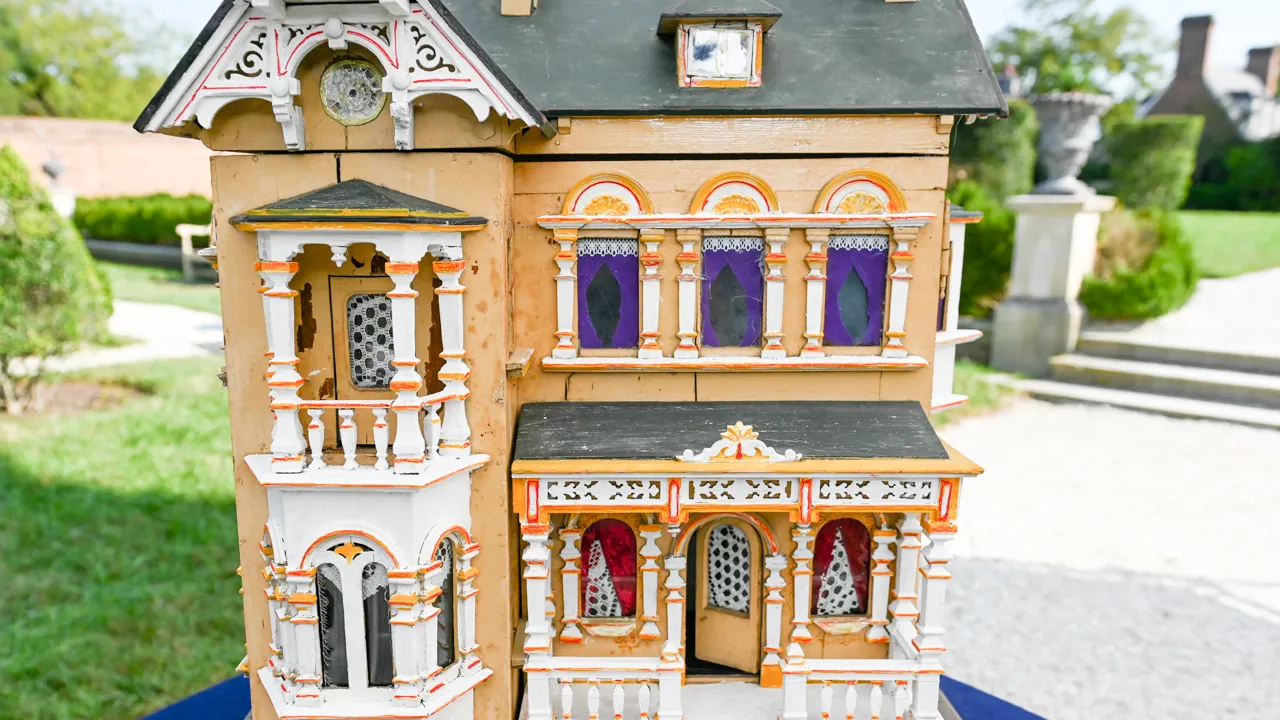GUEST: This painting came into my husband's antique store in Norfolk, Virginia, about 20 years ago. A picker found it, um, in an old house they were tearing down in Norfolk, in the Ghent area. It was in really bad shape. It had tears, and it was really dark, and you couldn't see any of the background or anything on it, but it fascinated him. So he paid, um, $200 to the picker and he brought it home, and he said, "I think I can clean it." And I said "No, no, no, no, I don't think you can."
APPRAISER: (chuckles)
GUEST: So we ask around and we found an art teacher down in Suffolk, Virginia. She also restored fine art. So we took it down there to her, and she took a look at it and she said, "Oh, please sell me this painting. I must have it for my private collection." My husband, Larry, said, "No, my wife is very attached to it." She took the girls and she kept them for a year.
APPRAISER: My goodness.
GUEST: And she completely restored them.
APPRAISER: What was the cost of having that done?
GUEST: She charged us $700 to restore it.
APPRAISER: You picked the right person, and I think that was more than fair. This is an oil painting on canvas, and I would date it between 1795 and as late as 1810. The style in which they're dressed, with these high-waisted white dresses, it's indicative of what was very much in the, in fashion in that period, and we assume they're sisters. We have decided without any doubt that the picture is of American origin, because this bow back Windsor chair that's in the background, that's an American form, not to be confused with an English Windsor chair. I suspect that these girls grew up in a family that had some money to spend. And oftentimes, portraits of young girls, they-- if they could afford it-- they would have their portraits painted, because there are a lot of children who never made it to adulthood. The mortality rate for children was very high. We might ask, "Why aren't these girls smiling?" We will rarely see portraits of, in the late 18th, early 19th century-- throughout the 19th century-- people usually weren't painted smiling. In this case, they look a little pensive, like they're serious-minded, well-behaved children. The picture is further enhanced by the fact that each young lady is wearing a coral necklace, and we think that's a carnelian in a gold frame, and these necklaces were considered a sign of good luck and a, an expression of wealth or opulence. So you might ask me, "Steve, who painted it?" I worked at it, and I consulted with a number of people-- in fact, some people who specialize in American folk portraiture. And they basically thought it was a terrific picture. They said the style in which it was painted doesn't direct us towards anyone in particular, but it doesn't make it any less attractive, that's for sure.
GUEST: Mm-hmm.
APPRAISER: Valuing it, we came up with a consensus. At auction, I would probably estimate it between $8,000 and $12,000.
GUEST: I just love the girls, and so thank you so much.
APPRAISER: Well, that makes two of us.
GUEST: I really appreciate it. (both laugh)











